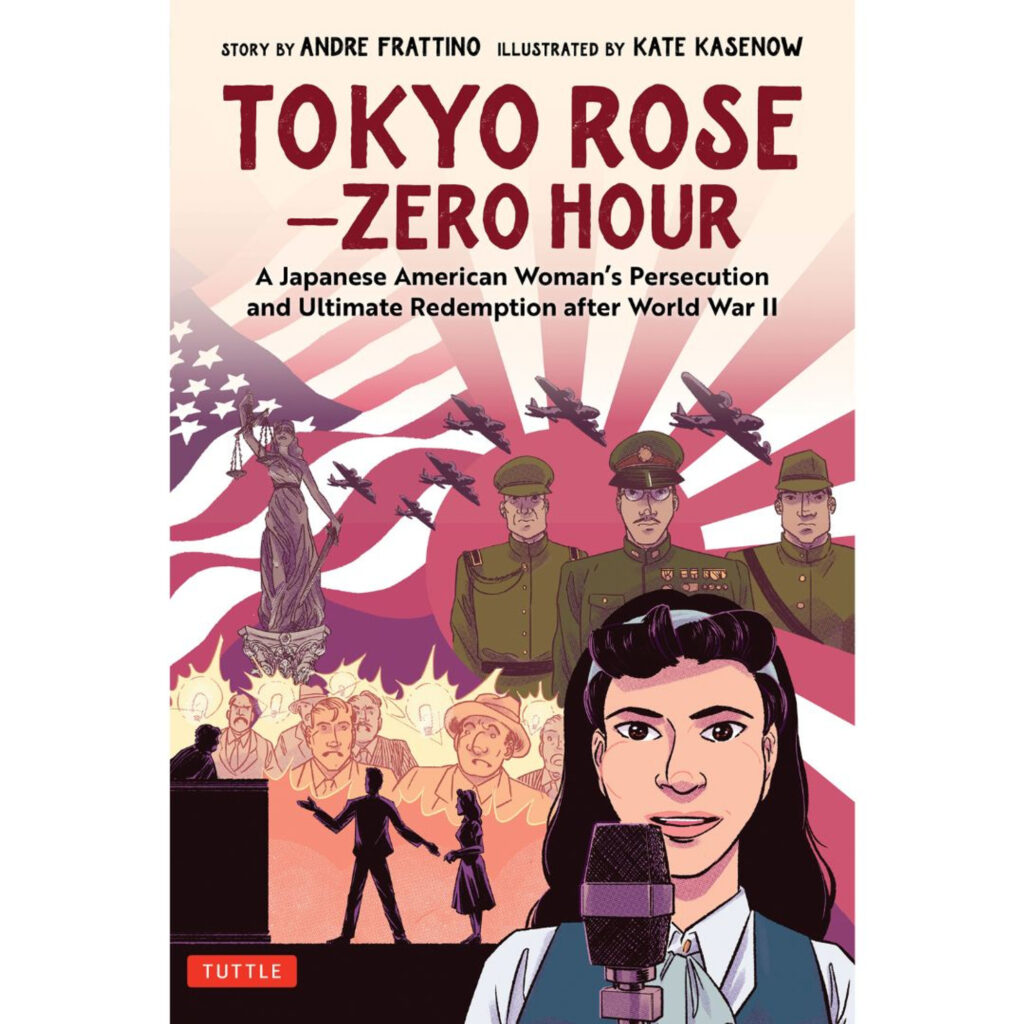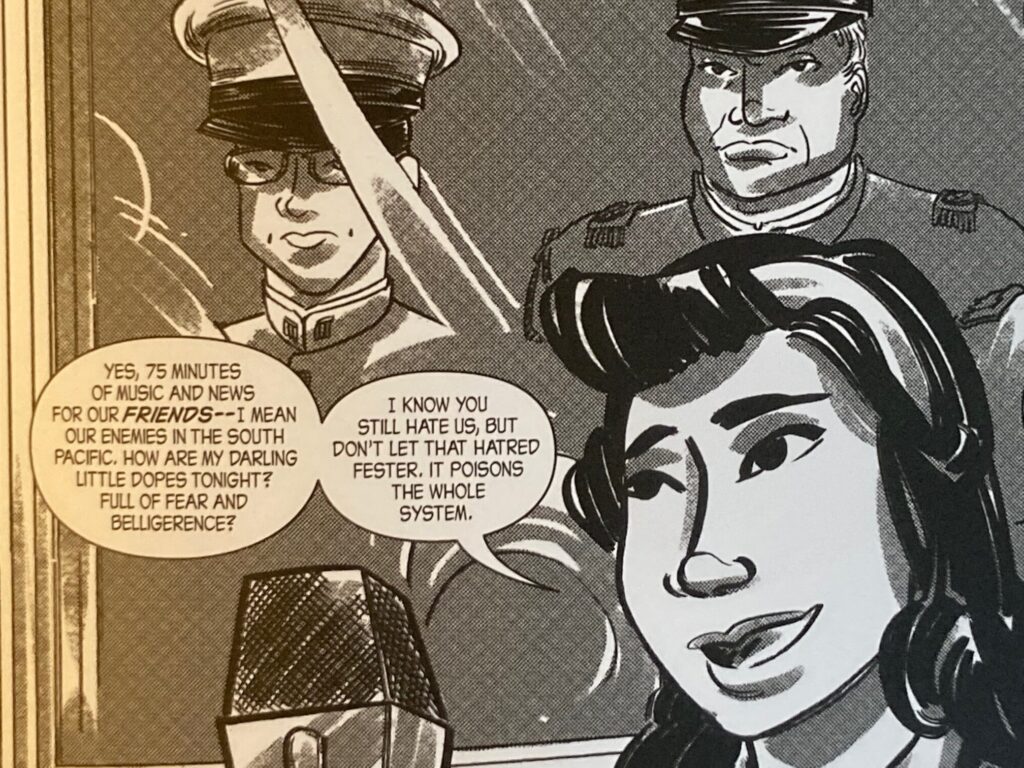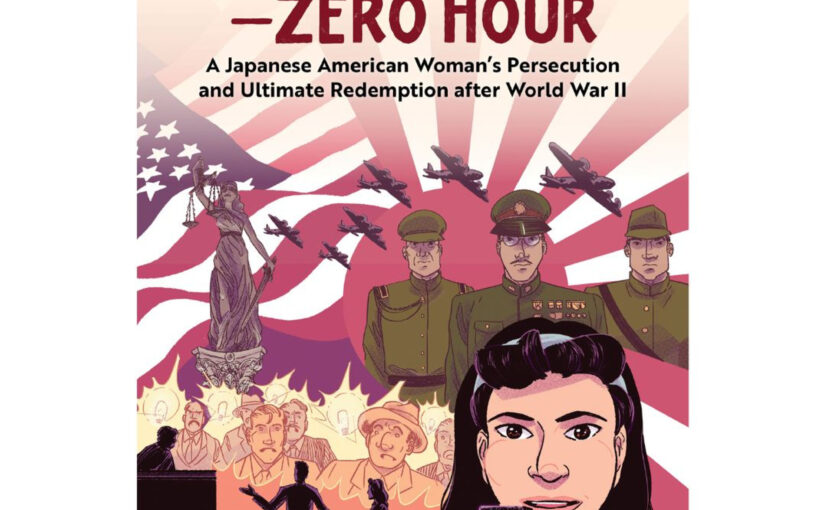As an adult, there are things that I know about, and things that I know. I knew of Tokyo Rose, but the actual reason why I knew about her was a mystery. However, I thought about it and realized that the largest reason it resonated with me was its inclusion in that David Lee Roth song. But then I realized that song was actually Yankee Rose, which wasn’t that bad in hindsight. After traipsing down 80’s nostalgia I kicked the pebbles in my mind and knocked over a memory about Tokyo Rose having something to do with WWII and broadcasting. Her story was a Venn Diagram of propaganda, nationalism, the evils of war, politics, and the massive numbers of innocents who get caught in their nation’s crossfire. After reading Tokyo Rose-Zero Hour I realized that I had a couple of her main characteristics correct, but was missing most of the major plot points.

Tokyo Rose-Zero Hour is a graphic novel on Tuttle Publishing by Andre Frattino with illustrations by Kate Kasenow. Creators who are presenting a non-fiction graphic novel about a sensitive subject, while trying to make it engaging, educational and entertaining face a mighty task. If the book is too jokey, dark, melodramatic or any number of other variables in one direction then the book won’t be read or appreciated by its intended audience. Tokyo Rose immediately sets the tone by presenting the book in black and white. Even if people accidentally pick it up expecting one sort of story, the duo-chromatic appearance lets readers know that this isn’t an action-oriented WWII tale.

Older readers will jump into the preface which sets the story up. Those readers who don’t have the patience to read it will still be able to understand and enjoy the story. Initially, we didn’t have the patience to read the preface either but found the story so engaging that we stopped the graphic novel and went back into the text that told more about the history of Tokyo Rose. It’s not that it’s mandatory, but due to the flashback nature of the first eight pages, it will certainly crystallize the story from the get-go.
Iva Toguri was a Japanese American woman who was traveling from the United States to Japan in the summer of 1941. After spending some time in Tokyo with her extended family she decided to return to the United States, but her exit papers weren’t approved by the Japanese government. That was on December 4, 1941.
December 7, 1941, made the world turn in a different direction for everyone. Toguri was a Nisei, or the child of a Japanese immigrant who was educated in America, and stuck in a country where she seemed like a local, but had the heart of someone who didn’t want to be there. Shortly after that, the Japanese government set up a propaganda department whose intent was to broadcast in English for the purpose of demoralizing Allied troops in the Pacific.
Japan’s initial attempt at this was met with laughter and derision by the Allied troops. The NHK realized this and set about finding some Nisei women who could speak without an accent and with such fluency to hopefully cast doubt in the Allied force’s minds.
Toguri was one of four women who became part of Radio Tokyo’s, Zero Hour estrogen team intent on simultaneously seducing, frustrating, and inspiring foreign troops. Tokyo Rose, Orphan Ann, whatever, the troops called them, they broadcast commentary in English, as well as, music to those foreign devils, more on that in a moment.
Tokyo Rose and her co-workers didn’t have the same presentation. Toguri’s commentary was more casual, less of a broadcast professional, and was laced with very soft sarcasm. Her delivery was clever enough to avoid detection from the Japanese military and NHK broadcasters. She wasn’t sharing military secrets or anything, but it certainly was not the intended demoralization that she was hired for. Toguri also helped her producers craft its presentation, and actively did as much as she could to help the POWs who were held in Tokyo.
When the war ended and Radio Tokyo propaganda was broken up, she could travel back to the United States. It’s here where she was put on trial for being a traitor and the graphic novel starts. To most at the time she was a pariah, traitor, and one who wasn’t even worthy of the time allocated to her from the courts.
Tokyo Rose is a graphic novel that reads very well. It’s emotional without being too heavy and possibly putting off middle or high school readers. To that end, the chapters break up the content and provide a chance for the graphic novel to breathe, which allows readers to appreciate the story. It’s non-fiction and many aspects of the story frustrating play out like an audience member internally shouting at the movie screen, wishing a situation or character would simply do something different. Tokyo Rose-Zero Hour is also a great graphic novel. It’s content will make it a lovely addition to those upper middle school students who are learning more about WWII, those high school readers and older who want to know about something that they only think that they do.
Tokyo Rose-Zero Hour is by Andre Frattino, with illustrations by Kate Kasenow and available from Tuttle Publishing.
There are affiliate links in this post.





 Facebook
Facebook Twitter
Twitter Flickr
Flickr GooglePlus
GooglePlus Youtube
Youtube